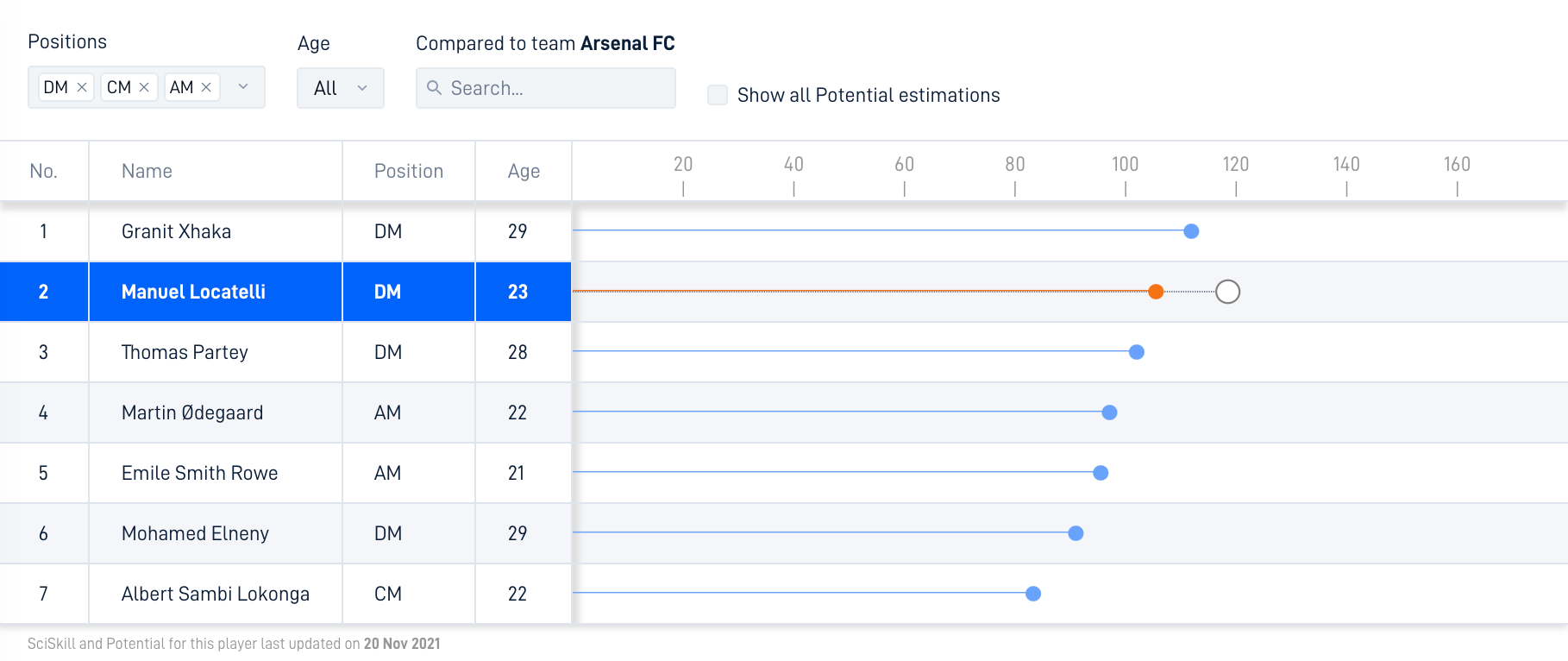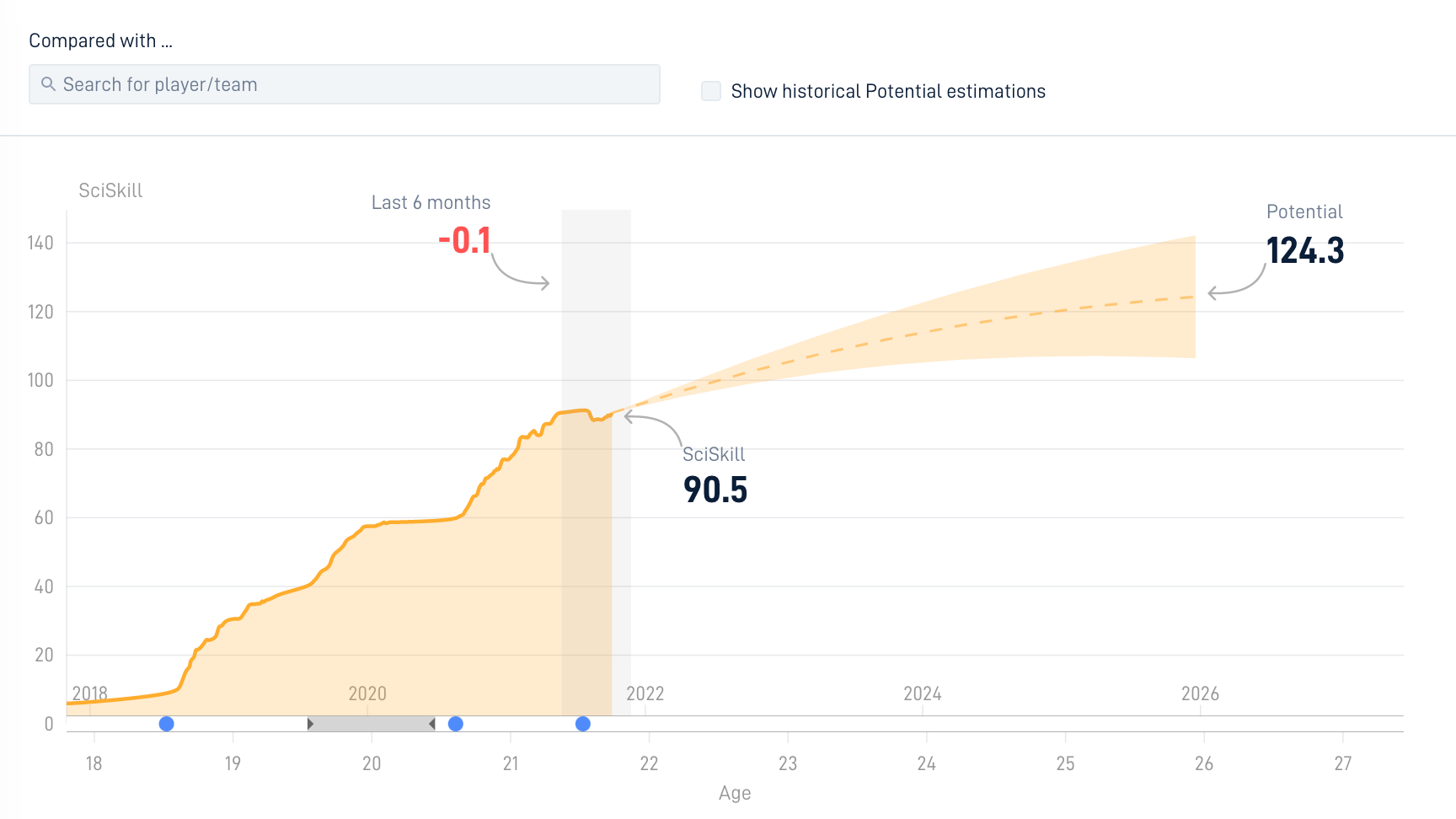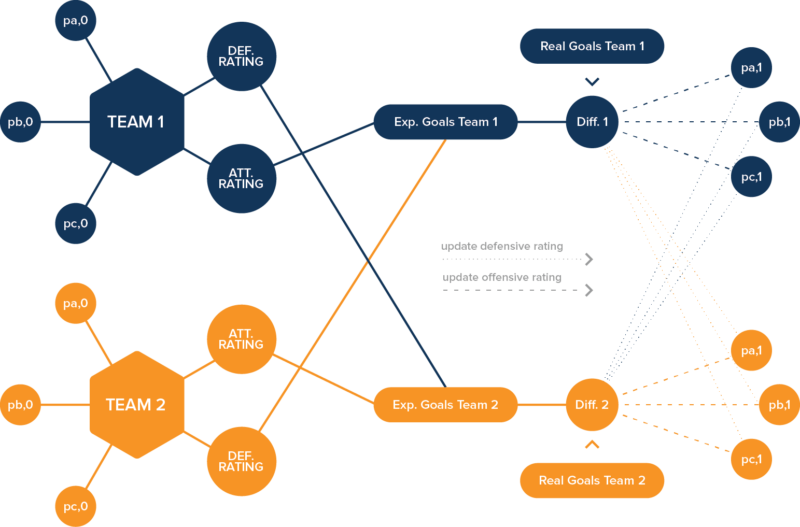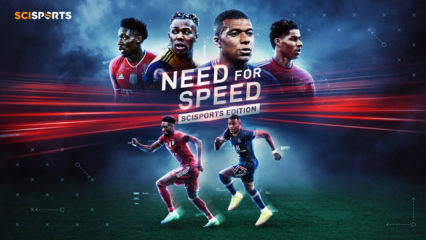
There are over 180,000 players on the SciSports platform and everyone will have different views on an individual’s skill level. As a company that helps clubs and agencies in their recruitment decision-making processes, we are aware that scouts and agents have varying objectives when it comes to recruitment. The SciSkill Index helps that process for different types of clients to view players through a data-driven player index.
This explanation will provide insight into the methodology we have used to measure the influence of every player on their respective team.
Influence
Right from the beginning, the aim with the SciSkill Index was to create an objective way of measuring the skill level of footballers around the world. In order to remove any subjective elements, our process had to include the same input for all players in order to produce an equal output that provides fair results.
As a result of data-gathering companies varying across the globe, the SciSkill Index only relies on basic input which is always stored for competitions: line-ups, goals, substitutions and match outcome. From this input, our index focuses on the influence that a player has on his team’s performance, rather than his specific actions on the pitch.
By purely measuring the influence a player has on his team’s performance, we are not able to detect elements such as specific passing skills. However, creating a specific Index for all professional players across the world allows users of the SciSports platform to immediately view the current skill level of a player and provide an objective perspective on whether they would be a good fit at their club.
Potential
Providing an objective metric to measure a player’s current influence on his team is useful, but recruitment in football often works best when getting ahead of competitors to find the next exciting player. This is where the SciSkill Potential estimation comes into play. Through estimating the current influence of a player, we were then able to use machine-learning algorithms to estimate the potential growth of players – in line with historical data of players who have taken similar career development paths. This subsequently provides the potential skill level of a player at their peak age.
By using the SciSports platform to filter players by Potential, users are able to identify highly promising players and compare them to players currently in the peak of their career. All of this helps better inform clubs when looking to recruit players.
Data input
In terms of data input, we only use the basic information of each match to ensure a level playing field across leagues. Therefore, the input variables of the SciSkill information are:
- Line-up (including position)
- Substitutions
- Type of match (e.g. league, cup, international)
- Competition strength
- Goals scored
- Minutes played
SciSkill in use
Within the SciSports platform, SciSkill and Potential can both be used alongside added features. While the Index remains the same as outlined above, users will have additional tools to scout players in-depth.
In the working example below, we see how the new updates will help with providing tools needed to compare players by skill level as well as further filtering by position and/or age. This example shows how Manuel Locatelli ranks in SciSkill and Potential compared to Arsenal’s current midfield options.
By filtering in terms of position and or age, this view allows users to see how a possible signing ranks to players currently at the club. In the above case, Locatelli ranks as one of the best midfielders by Potential compared to Arsenal’s current options.
Through being able to filter players by SciSkill in different areas, users will be able to better understand the squad make-up and where strengthening may be needed. For example, filtering by age within a club could show that they need to recruit more U23 players for future development. And, as shown in the case below with Sven Botman, recruiting younger players is supported by Potential estimations of ability at their peak age.
In order to track a player’s most recent developments, the six-month development indication highlighted in green provides added insight into the player’s progression in skill level. Next to that, estimations of potential development offer a well-informed insight for users.
One important aspect to note when using SciSkill to analyse players is how it adds to a fully-fledged recruitment strategy. A range of filters within the platform can be used to filter down players in a database of over 180,000 players to then flag the most interesting options as the first step in a player search. As a next step, further research is required either within the platform with more in-depth insights or by video and/or live scouting.
The algorithm
The algorithm is a model which is an iterative machine learning algorithm that determines the quality of a player based on historical information. The current skill level of a player is assessed by training the algorithm on historical data. When we know the line-up of a team, we can predict the outcome of a match (and we’ve outperformed the bookies during validation).
Next to that information, it is important to know that a player’s SciSkill values are only adjusted when having played a match. In the case of a player having a large period of inactivity, values are then corrected in line with that lack of game time. Furthermore, a player transferring to a different league will impact their SciSkill. The algorithm takes into account the league strength a player is operating in which means values can increase or decrease based on a player’s transfer activity and subsequent minutes played in those leagues.
Example: Team A plays against Team B and the expected result of the match is 2-1, but the match actually finishes 3-1. Therefore, the attacking rating of all players of Team A would increase because they have overperformed. This improvement gets distributed amongst the players, in a ratio based on their attacking contribution per position. Similarly, the defensive rating of all players of Team B would decrease based on their defensive contributions.
Validation
From years of experience within the professional industry, we have noticed that our platform and SciSkill Index is able to quickly return a list of the most interesting players per league or region in just a few clicks. In line with each client’s specific needs and objectives, this has proven to be an effective combination to improve decision-making processes in player recruitment.
DATA DELIVERY
Your source for direct access to the best football analytical models out there










